Blood meal fertilizer is just dried animal blood, mostly from cattle, which is important in organic gardening. It is famous due to its richness in nitrogen, which is a major nutrient for the remarkable development of plants and soil fertility. This blog will focus on different aspects of the blood meal fertilizer, starting with its ingredients and merits and finishing with step-by-step instructions on how it can be applied effectively for various types of gardening. Additionally, we will highlight how it affects the health of soil and the productivity of plants, dispelling some common myths and providing safety measures to consider. The mission of this paper is to give you a complete understanding of the blood meal fertilizer so that you can exploit its maximum potential in your gardens.
What is Blood Meal Fertilizer?
Bloodmeal fertilizer is an organic product made from dried, powdered blood of animals, particularly cows. It has a lot of nitrogen content; it is usually around 12-15% making it good for replenishing soil’s very low nitrogen levels. Nitrogen is one of those important elements plants require (macronutrient) in large amounts for growth promotion, lush foliage, and overall plant well-being. Despite having small quantities of other nutrients such as potassium and phosphorus contained in it, the concentrations are quite low. Blood meal acts as a natural conditioner to soils that are nutrient deficient and helps improve soil structure and aeration, as well as enhance microbial activity due to its high nutrient content. Plant food becomes accessible quickly because it is composed of fast-release nutrients that can give plants an impulse, especially during their growing periods.
Understanding Bloodmeal
Blood meal contains approximately twelve to fifteen percent nitrogen and trace amounts of phosphorus about 1.5%, and potassium at 0.7%. It is rich in nitrogen, which enhances rapid vegetative growth and chlorophyll synthesis, which is needed for photosynthesis. When using blood meal, the fast release rate makes sure that plants receive an immediate nutrient boost suitable for beginning stages of growth after pruning or flowering cycles with high demand for nitrogen.
Moreover, by being organic itself, bloodmeal encourages the multiplication of beneficial microbes in the soil. This microbial activity assists in nutrient cycling and organic matter decomposition and improves soil texture and aeration. Thus, blood meal improves physical properties, including biological ones, making the soil more fertile while fostering resilience.
It ought to be handled carefully since excess application may lead to burning on leaves due to excessive nitrogen levels (nitrogen burn). Proper application rates are normally two to three pounds per square yard or 0.1 – 0.2 pounds per plant, depending on the specific nitrogen needs of the particular soil type being cultivated or the type of plants being grown. A soil test should be carried out prior to any fertilization exercise to determine the right amount required so as to avoid over-fertilizing.
Comparison between Blood Meal and Bone Meal
Blood and bone meal are valuable organic fertilizers, yet they serve distinct purposes due to their differing nutrient compositions and release rates. Blood meal has a nitrogen content of 12-15%, which is great for promoting rapid vegetative growth and chlorophyll synthesis. Thus, plants may require an immediate nitrogen supply during their initial development stages, following pruning or flowering periods. However, it must be used cautiously to avoid nitrogen burn.
On the other hand, bones contain phosphorous in relatively high levels ranging between twelve to sixteen percent and calcium around fifteen-twenty two percent. While phosphorus is needed for root system growth, fruiting, and flowering, calcium supports overall plant structure and cell wall integrity. As opposed to blood meal’s fast release of nitrogen, bone meal slowly releases its nutrients hence it is perfect for long-term soil enrichment that ensures constant nutrient supply.
When compared in terms of their applications, blood meal finds its best use for green leafy vegetables and plants with a sudden need of nitrogen; however, bone meal is more suitable for root crops and flowering plants which require higher amounts of phosphorus as well as calcium. A general application rate for bone meal varies from 1-2 pounds per 100 square feet or about ½ cup per plant based on the specific soil requirements for phosphorus and calcium. In addition, like blood meal, one should carry out soil test to determine the right amount to support optimal health of the plant without causing any problem related to the nutrient balance.
How to Use Blood Meal in Your Garden
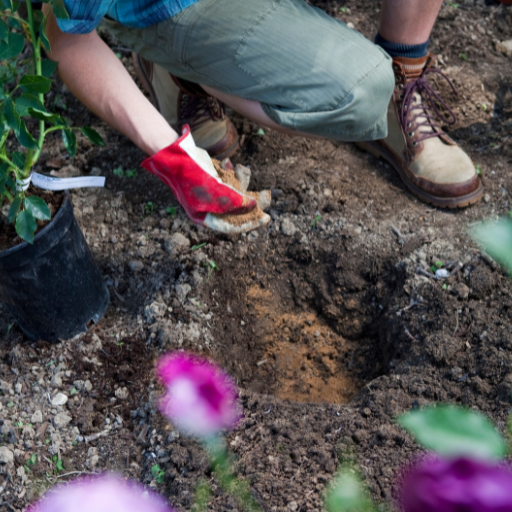
Determining the most appropriate rate of application is usually the first step when you want to use blood meal in your garden. The appropriate application rate is usually between 2 and 3 pounds per 100 square feet or about a tablespoon per plant. After distributing it evenly on the soil surface, lightly work it into the top few inches of soil. It should be applied at the beginning of the growing season to support early plant development. Leafy greens, brassicas, and corn are examples of nitrogen loving plants therefore these types of plants benefit more from blood meal because it has a high content of nitrogen (Garden Guides).It is important to water thoroughly after application in order to aid nutrient release.With blood meal’s ability to raise nitrogen levels almost instantly, observe any signs that show excess fertilization such as yellowing leaves for you to control its usage appropriately.
Steps for using Blood Meal
- Before Applying Blood Meal: Prior to using blood meal for your farm, perform a previous soil test so as to know what level of nutrients are there in your soil currently thus how much nitrogen the soil needs.
- Appropriate Amount: According to your results, make sure you calculate the right quantity of blood meal that should be used for each specific field. The general guide is 2-3 pounds per 100 sq ft or about one tablespoonful per plant. Calibration may be necessary depending on specific plant requirements.
- Preparing Soil: Remove all trash from planting areas and ensure that the soil is moist but not waterlogged. Even distribution is crucial for effective nutrient absorption.
- Apply Blood Meal: Spread this calculated amount uniformly across all corners where plants are grown while also sprinkling some around the bases of individual plants if they were used before.
- Mix Into Soil: Using either a hoe or a rake, lightly work with it into the top four inches deep from where it was initially spread on your farmland. That helps incorporate nitrate into the soil profile so as to open up root access.
- Water Deeply: After applying it, the area must be well watered so that the dissolved nutrients can reach the plants’ roots. Proper moisture levels are imperative for efficient nutrient release.
- Watch Plant Reactions: Observe your plants closely after applying blood meal. It may be necessary to apply more fertilizers depending on their response, like if they turn yellow, have burnt tips, or crackling leaves indicating excessive nitrogen levels.
How Much Blood Meal to Use?
In order to determine the right amount of blood meal that should be applied there are several things you need to take care. For many cases 2-3 pounds per 100 square feet or about 1 tablespoon per individual plant are suggested quantities of using blood meal by most sources. By doing so this dose will ensure enough supply of nitrogen without going into over-fertilizing them. Uniform distribution of the blood meals across the soil surface followed by incorporation into top few inches via raking is also another way that someone can use it in his or her garden. In case one spreads it on the ground in water-soaked conditions after its application, this will help strengthen the nutrients available in it, thereby maximizing their utility in plants. Therefore, it’s important for one to conduct regular soil testing in order to scrutinize possible nutrient level adjustments.
Seasonal Application: When and How Often?
For best performance outcomes, though, there are specific moments during which blooding has been done. Initial application is often carried out early spring, just as plants break dormancy and seedlings are transplanted, an observation made by different authorities within this field. To keep nourishing throughout the middle summer stage, the crop mainly applies again, ensuring healthy crops with vigorous growth.
According to technical guidelines, a rate of 2-3 pounds per 100 square feet for spring application is recommended, but this can be changed according to soil test results. The amount should be the same again in subsequent mid-summer applications, although some advise reducing it slightly to 1-2 pounds per 1002 so as not to cause nitrogen overload.
There is need for one to regularly check soil nitrogen levels through testing and then adjust the application rate. For that reason, after everyone’s use, ensure that you dose your plant with a lot of water. Through such an approach blood meal is effectively utilized over the whole growth season period where it supports strong plant growth throughout its duration.
Benefits of Blood Meal as a Fertilizer
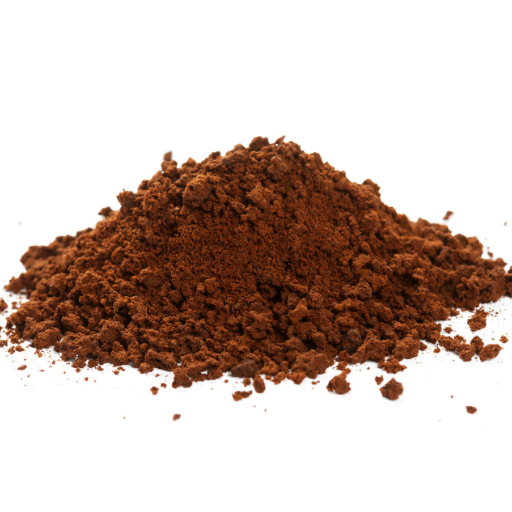
Blood meal is one of the most effective fertilizers, mainly because it is rich in nitrogen, which promotes strong plant growth and lush foliage. This natural amendment not only improves soil fertility but also enhances microbial activity in the soil. Soil processes are enhanced by a high concentration of nitrogen that decays waste products leading to more nutrients in the ground. Moreover, it acts as a valuable soil conditioner while helping to keep the soil structure intact and preventing water loss. It can also serve as a deer or rabbit repellent, offering extra security for your garden. Employing blood meal into an all-encompassing fertilization approach can improve plant health and boost yields in addition to having a productive garden ecosystem.
High Source of Nitrogen: Promoting Plant Growth
Nitrogen content is often 12-15% in the case of blood meal, making it one of nature’s richest sources of this element on organic basis. Essential processes such as photosynthesis and protein synthesis occurring within plants demand large amounts of nitrogen compounds for their normal functioning. Blood meal has its rapid decay once incorporated into the ground, resulting in the quick release of nitrogen available for uptake by plants when they need it most. Consequently such availability gives instant plants’ strength manifesting itself through heavily foliaged green leaves that grow fast.
Technical parameters further validating this include the nitrogen release rate and its impact on soil pH. Studies have shown that blood meals are released in about 6-8 weeks period, providing continuous nutrition. Additionally, the typical pH range associated with blood meals is slightly acidic at approximately 6.8, thus helping to correct alkalinity in soils where necessary. The application of blood meal demands sufficiently thoughtful planning due to its concentration levels and impact on soil properties such as microorganism populations hence it should be well integrated with other components of Integrated Soil Fertility Management (ISFM).
Benefits as an organic fertilizer
Blood meal has several benefits as an organic fertilizer, majorly due to its high nitrogen content, rapid release of nutrients and effects on soil structure. Firstly, it increases the nitrogen levels in the ground, which are important for increasing the number of leaves in a plant. It is particularly recommended for use on leafy vegetables like lettuce, spinach and kale. Secondly, blood meal has a quick nutrient release rate, generally lasting between six to eight weeks, making sure that plants always have an adequate supply of nitrogen. These nutrients are, therefore, taken immediately by plants and transformed into energy needed for growth within a very short period.
From a technical standpoint, the nitrogen content in blood meal is about 12-15%, and it typically has a slightly acidic pH of around 6.8. This can be leveraged to correct soil pH levels, particularly in overly alkaline soils. Additionally, blood meal contributes to improved soil structure by adding organic matter which enhance aeration and water retention capabilities. Finally, it may repel common pests, including deer and rabbits, thus adding protection besides its fertilization properties. Therefore, these multifaceted benefits highlight the importance of using blood meals as part of a balanced and strategic ISFM plan.
Blood Meal to Improve Soil Quality
By using blood meal as a soil amendment, there are several mechanisms which can be applied to significantly improve the quality of the soil. Such organic matter increases the water retention and aeration thus enhancing soil structure through blood meal. A well-aerated soil is very essential in root development and for plant growth at large since it enables roots to access essential nutrients and water more efficiently.
The second way this amendment improves soil quality is by providing nitrogen. Nitrogen forms an important component of chlorophyll, which plants use in photosynthesis. High levels of nitrogen support vegetative growth and increase foliage greenness. It also encourages beneficial microorganisms in the soil, thereby contributing to an improved soil microbiome.
Additionally, blood meal can help restore correct pH levels in soils. Slightly acidic with a pH of around 6.8, it is best suited for neutralizing alkaline soils. By adjusting the pH balance, blood meal ensures optimal nutrient availability and uptake into plants which ensures that they receive all necessary nutrients required for normal growth.
Furthermore, deer and rabbits may be kept off by applying blood meal to crops or vegetable gardens. This keeps them away from plants without necessarily using chemicals as pesticides due to its scent developed from animal processing leftovers.
In summary, blood mealing does not only provide vital nutrients but also optimizes the pH level of soil structure besides being pest-repellent; hence, it forms an integral part of the comprehensive approach towards managing fertility in soils.
How Much Blood Meal Should You Use?
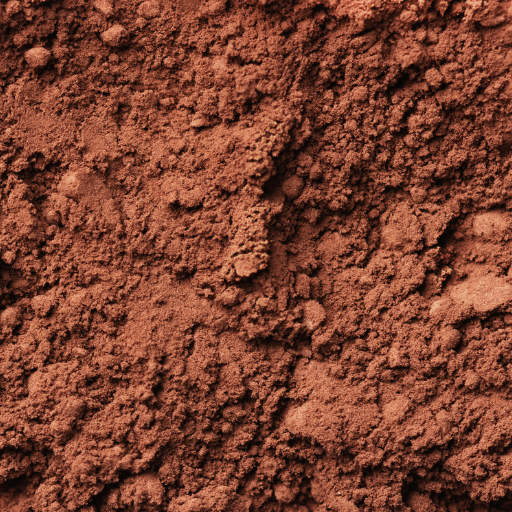
The recommended blood meal rates may differ depending on your plants’ needs and current soil conditions. As a rule of thumb, it is advised to apply about 1-2 tablespoons of blood meal per square foot, digging it into the top few inches of soil for mature plants. In case you are dealing with heavy feeders like corn or leafy greens then up to one cup per 20 square feet or half a cup per plant might be more appropriate. The application of approximately one to two pounds of blood meal per 100 square feet just before planting can promote early growth. Remember that at all times always follow label instructions especially by conducting a soil test if possible so as not to create an imbalance in nutrients or overfertilize.
How to Calculate How Much Blood Meal Your Garden Needs
The actual amount of blood meal needed for your garden depends on many factors including the type of soil, type of plant and stage of growth. This calls for starting from the scratch by undertaking soil tests to determine mineral inadequacies before calculating the right quantity. If there are any insufficiency areas found, this should be done in line with types of soils and plants in question. For most home gardens, applying about 1-2 pounds per 100 sq ft prior to planting is a good rule guideline. Normally,1-2 teaspoons around the base area for individual plants or even half a glassful for larger ones would suffice. A uniform distribution must also be ensured when using it while still working it into the top few inches of soil as much as possible . This method ensures maximum nutrient uptake and minimizes the risk of nutrient overload disease.
Avoiding Overuse
Using excessive amounts can lead to unbalanced nutrition, burning effect on plants and environmental problems among other issues. One common problem associated with too much use is nitrogen overdose which causes excess foliage development at the expense of root and fruit formation. Symptoms may include dark green leaves, wilted plants and scorched roots to name a few. Moreover, excessive leaching of nitrogen to the groundwater could have environmental implications. In order to avoid overuse limiting yourself is vital in terms of following product guidelines and adjusting quantities based on soil test results. Incremental application coupled with frequent monitoring can lead to satisfactory plant health and sustainability alike too.
Can Blood Meal Improve Soil Health?
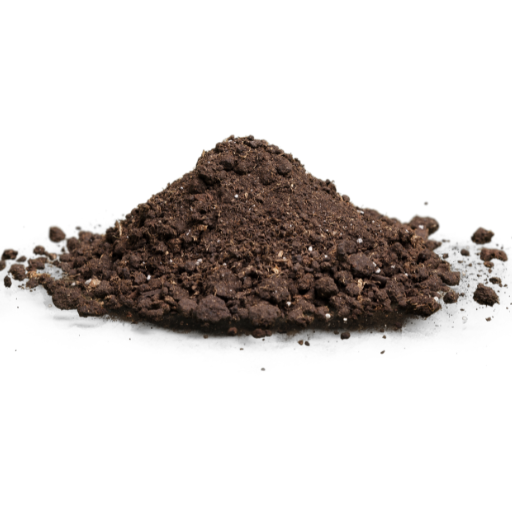
Blood meal could be a way of improving soil health through increasing nitrogen levels, which is vital for plants’ growth. This adds organic matter to the soil, elevating microbial activities and, thereby, enriching soil structure. As a result, it would enhance water retention in the ground while facilitating proper aeration that allows healthy roots to thrive. However, caution should be taken during the application process so as not to cause adverse effects like nutrient imbalances or environmental degradation and this necessitates applying it according to the recommended dose based on soil tests conducted. Regularly incorporating blood meal and other organic practices can develop more fertile and sustainable gardening environments.
Nitrogenous Blood Meal
Blood meal is an efficient source of nitrogen with about 12-15% total nitrogen by weight which is much higher compared with many other organic fertilizers. The high proportion of nitrogen makes it ideal for promoting rapid vegetative growth. Blood meal has readily available nitrogen that helps in achieving lush green foliage and general plant fitness. Once applied, blood meal undergoes microbial decomposition, resulting in ammonia, which increases soil nitrates, thus boosting the nitrogen levels required by plants when there are deficiencies. The generally recommended application rate for vegetable gardens would range between 2-3 pounds per 100 square feet while for flowers it will often be 1-2 pounds per 100 square feet.. Precision in application can be achieved by conducting soil tests to ascertain existing nitrogen levels and adjust the dosage accordingly. Therefore, balancing the supply of N with other essential nutrients becomes key in preventing imbalances that may hinder plant growth development; hence, using blood meal regularly together with a balanced fertility program ensures the best plant health and good soils.
pH Influence
Blood meal alters the pH level of the soil, commonly reducing it slightly towards the acidity side. This acidification comes after quick decomposition, leading to the release of ammonia converting to nitrate plus hydrogen ions, hence lowering pH. Close monitoring of soil pH is critical because extremely low pH may reduce the availability of certain essential nutrients. Regular measuring of pH is important especially if blood meal is frequently used, for maintaining good growing conditions. Some of the technical parameters that are useful in controlling soil pH while applying blood meal include:
- Application Rate: 2-3 pounds per 100 square feet for vegetable gardens; 1-2 pounds per 100 square feet for flowers.
- Ideal Soil pH: 6.0-7.0 for most plants.
- Monitoring Frequency: Soil pH should be tested at least twice a year or before and after significant applications of blood meal.
This helps avoid extreme changes in soil acidity that would hinder nutrient uptake thereby supporting healthy plant growth and development through proper fertilization and amendment strategies.
Common Questions About Blood Meal
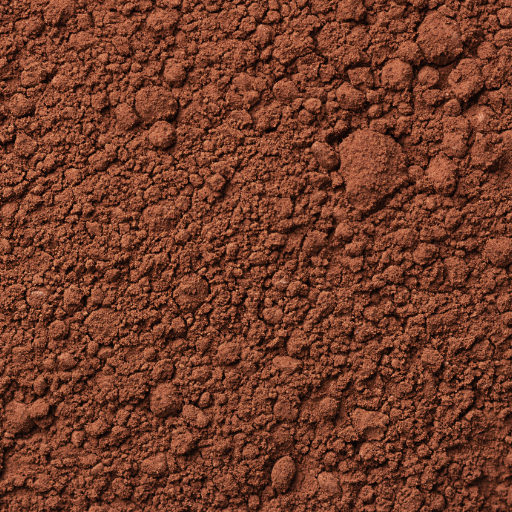
Blood meal as a primary function serves in practice as animal blood-derived, mainly from cattle or pigs high nitrogen fertilizer. This makes it attractive due to its prompt release of nitrogen, which can increase plant growth substantially. It is quick acting and can be used to rectify soil nitrogen deficiency in organic gardening. However, you must be careful when using it because if not properly handled, it can lead to burns or imbalances with the PH levels. Proper storage and application techniques are necessary for ensuring that it remains effective as well as safe.
Does Blood Meal Attract Pests?
The meat-like odour in blood meal can attract certain pests, including carnivorous animals such as dogs, raccoons, and rodents. Normally, though, this does not happen with insects. To minimize the risk of attracting these animals, the blood meal should be thoroughly mixed into the soil or used together with other fertilizers.
Application Depth: Incorporate blood meal at 2 – 3 inches below ground level in order to reduce odor emission and deter animals
Use with Mulch: Use mulch layer on top of a treated area to eliminate scent.
Alternative Repellents: Other pest-deterring agents, such as fencing or commercial repellents, can also be used alongside blood meal application.
By doing so pests are less likely to be attracted to locations treated with substances like blood meal thereby maintaining your garden intact.
Is Blood Meal Safe for All Plants?
Even though blood meal is highly beneficial as a fertilizer because of its nitrogen content, it does not always work for all plants. For instance, some crops do not grow well under low-nitrogen conditions, while others prefer acidic soils. They fail after applying this type of manure because they end up dying instead of growing healthy. Root vegetables and legumes are among those listed examples in which excesses of nitrogen cause leafy greens rather than fruiting and root formation.
- Nitrogen Content: By weight alone, there is about 12-15% nitrogen in blood meal. This makes it important to carefully apply it to avoid cases of burning due to over-application.
- Soil pH Impact: Blood meal, upon addition into soil can increase the acidity of the soil for a short time thereby making it unsuitable for plants that prefer neutral or slightly alkaline soils
- Application Rate: The general recommendation is usually about 1-2 tablespoons per square foot of soil, depending on the plant’s specific needs and the soil’s current state.
Can Blood Meal Affect the Smell of Your Garden?
Yes this fertilizer may affect your garden’s smell. This organic fertilizer that comes from animal blood has a strong scent which often remains noticeable especially after it has just been soaked. Factors like moisture levels, temperature and source/processing of blood meal may cause variations in its intensity.
- Odor Strength: Blood meal contains organic components, hence its strong, distinct aroma. Although this stench disappears within a few days as it gets absorbed into the ground, some animals and insects are attracted by these odours.
- Environmental Conditions: Moisture intensifies smells in humid or damp conditions by facilitating the release of odorants from organic products.
- Mitigation Techniques: Instead of leaving it on top, add blood meal immediately to your soil so you won’t end up with off-putting scents all over the place. Alternatively, specific formulations and processing techniques, such as deodorization, can also help minimize smell without compromising nutrient content.
Frequently Asked Questions (FAQs)
Q: What is blood meal fertilizer?
A: Blood meal fertilizer is an organic plant fertilizer made from dried blood collected from meat packing plants. It is high in nitrogen and typically has an NPK ratio of 12-0-0, indicating it contains 12% nitrogen, but no phosphorus or potassium.
Q: Is blood meal a good fertilizer for my garden?
A: Yes, blood meal is a good fertilizer for garden vegetables and other plants that need a nitrogen boost. It improves the nitrogen content in the soil, which is essential for plant growth.
Q: How do gardeners use blood meal?
A: Gardeners use blood meal by adding it directly to the soil or compost. It can be spread evenly over garden beds or mixed into the soil to provide a quick-release source of nitrogen.
Q: Are there alternatives to blood meal?
A: Yes, alternatives to blood meal include other organic fertilizers like feather meal, alfalfa meal, and bone meal powder. These options provide various nutrients with different release rates, which can also benefit your plants.
Q: Can blood meal burn plants?
A: Blood meal can potentially burn plants if too much is applied at once. It contains a large amount of nitrogen, which can damage plants if used excessively. Always follow recommended application rates to avoid this problem.
Q: What are the benefits of using organic blood meal?
A: Organic blood meal is a by-product of the meat industry, making it a sustainable fertilizer option. It quickly adds nitrogen to the soil, enhances compost quality, and is an effective way to recycle nutrients back into the soil.
Q: What kinds of plants benefit most from blood meal?
A: Fast-growing, leafy plants such as garden vegetables, lettuce, and spinach benefit significantly from blood meal as it provides much nitrogen for their growth and development.
Q: How often should I apply blood meal to my garden?
A: It is typically recommended to apply blood meal once or twice per growing season, depending on the specific needs of your plants and the existing soil fertility. Always refer to the package instructions for precise application rates.
Q: Does blood meal have an odor?
A: Blood meal has a mild smell of blood, which can attract certain wildlife such as squirrels and moles. However, when mixed well into the soil, the odor dissipates quickly.
Q: How much blood meal should I use for my garden?
A: A general recommendation is to use about 3 lbs of blood meal per 100 square feet of garden space. This amount can vary based on the plant’s needs and soil conditions. Always follow the specific directions on the product label.






